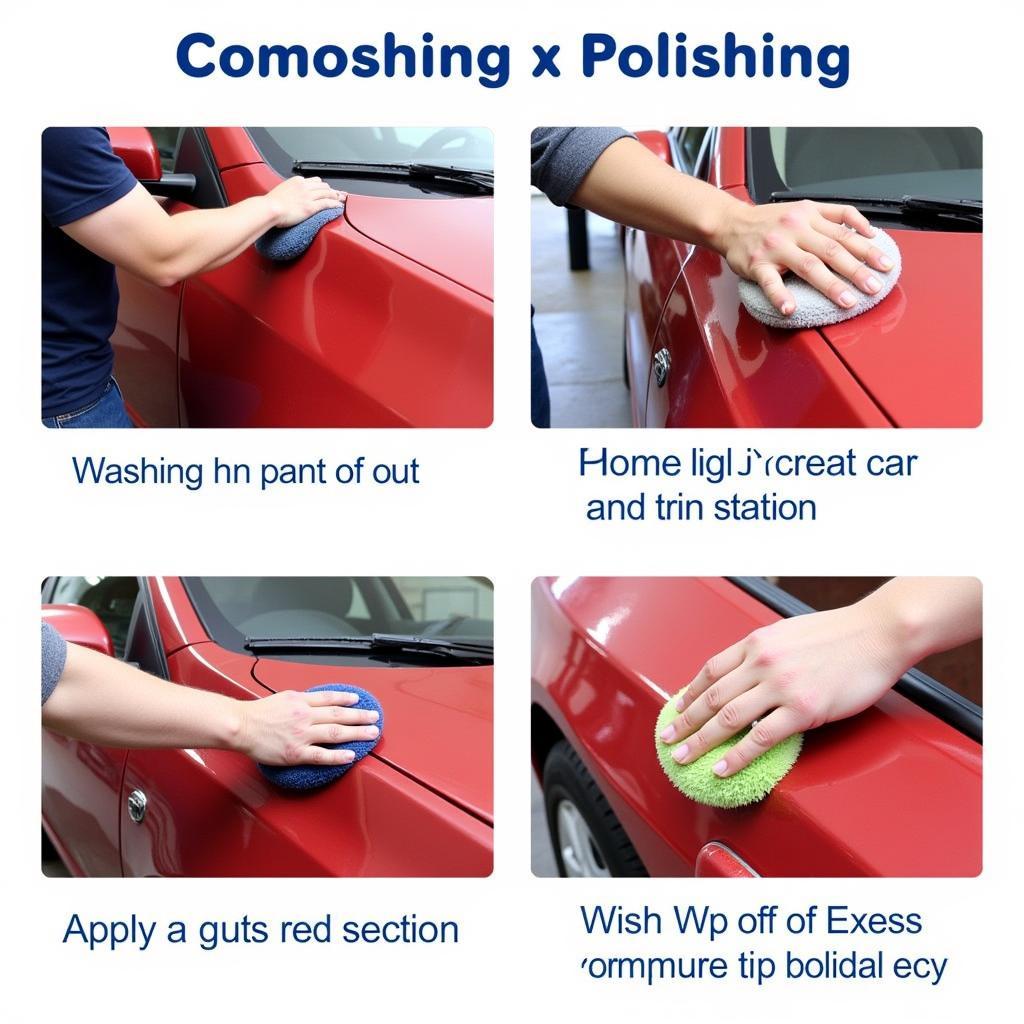A polishing tool for car is essential for anyone looking to restore their vehicle’s paintwork to its former glory. Whether you’re dealing with swirl marks, minor scratches, or simply want to enhance the shine, the right polishing tool can make all the difference. From rotary polishers for professionals to dual-action polishers for beginners, understanding the various types and techniques will help you achieve professional-looking results. Let’s dive into the world of car polishing and explore how you can transform your car’s appearance. best polishing tool for car detailing
Types of Car Polishing Tools
Choosing the right polishing tool for car detailing is the first step towards achieving a flawless finish. Here’s a breakdown of the most common types:
- Rotary Polishers: These powerful tools are favored by professionals for their aggressive cutting ability, quickly removing deep scratches and imperfections. However, they require experience and careful handling due to their high speed and potential to damage paint if used incorrectly.
- Dual-Action Polishers (DA): DA polishers are ideal for beginners, offering a more forgiving learning curve. Their oscillating and rotating motion reduces the risk of burning through paint, making them safer for novice detailers while still delivering excellent results.
- Random Orbital Polishers: Similar to DA polishers, random orbital polishers move in a random pattern, further minimizing the chance of paint damage. They are excellent for achieving a swirl-free finish and are suitable for both beginners and experienced users.
Choosing the Right Polishing Pad
The polishing pad you choose plays a crucial role in the final result. Different pads are designed for specific tasks, ranging from heavy cutting to fine polishing.
- Wool Pads: These aggressive pads are ideal for removing heavy scratches and swirl marks, typically used with a rotary polisher.
- Foam Pads: Foam pads come in varying densities, from heavy cutting to ultra-fine finishing. Choosing the right foam pad depends on the severity of the imperfections and the desired level of shine.
- Microfiber Pads: These pads are known for their ability to produce a high-gloss finish, perfect for the final polishing stage.
Which Polishing Compound Should I Use?
Selecting the appropriate polishing compound is just as important as the tool itself. Compounds vary in abrasiveness, designed to address different paint imperfections.
- Heavy Cutting Compound: Used for removing deep scratches and swirl marks.
- Medium Cutting Compound: For moderate imperfections and paint correction.
- Finishing Polish: Used for refining the paint and achieving a high-gloss finish.
Polishing Your Car: A Step-by-Step Guide
-
Wash and Dry Your Car: Thoroughly clean your car to remove any dirt or debris that could scratch the paint during polishing.
-
Inspect the Paint: Identify the areas that require attention, noting the severity of any scratches or imperfections.
-
Choose the Right Pad and Compound: Select the appropriate pad and compound based on the condition of your car’s paint.
-
Apply the Compound to the Pad: A few pea-sized drops of compound are usually sufficient.
-
Polish in Small Sections: Work in small, overlapping sections to ensure even coverage.
-
Wipe off Excess Compound: Use a clean microfiber towel to remove any remaining compound.
-
Inspect and Repeat if Necessary: Check your work and repeat the process if any imperfections remain.
 Steps for Car Polishing
Steps for Car Polishing
What is the best polishing tool for car detailing?
The “best” polishing tool depends on your skill level and the specific needs of your car’s paint. Dual-action polishers are a great starting point for beginners, while rotary polishers are preferred by experienced detailers.
How often should I polish my car?
Polishing your car every few months or as needed can maintain its shine and protect the paint.
“Choosing the right polishing tool and technique is crucial for achieving a professional-looking finish,” says John Smith, a seasoned auto detailer with over 20 years of experience. “Start with a less aggressive tool and compound, and gradually increase the abrasiveness if needed. Patience and practice are key.”
Conclusion
A polishing tool for car is an investment in your vehicle’s appearance and longevity. By understanding the different types of tools, pads, and compounds, and following the correct techniques, you can achieve a showroom shine and protect your car’s paint for years to come. Remember to start slowly and practice to master the art of car polishing.
FAQ
- What is the difference between polishing and waxing?
- Can I use a household drill for car polishing?
- How do I prevent swirl marks when polishing?
- What is the best type of polishing pad for beginners?
- How do I remove heavy scratches from my car’s paint?
- What is the difference between a rotary and a dual-action polisher?
- How can I maintain the shine of my polished car?
Common Polishing Scenarios
- Removing swirl marks from dark-colored cars.
- Restoring faded paint on older vehicles.
- Preparing a car for a car show.
- Maintaining the shine of a new car.
Further Exploration
For more in-depth information, check out our articles on best polishing tool for car detailing and car polishing power tool.
Need assistance? Contact us via WhatsApp: +1(641)206-8880, Email: [email protected], or visit us at 910 Cedar Lane, Chicago, IL 60605, USA. Our customer support team is available 24/7.
